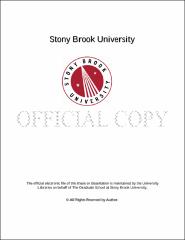| dc.identifier.uri | http://hdl.handle.net/11401/76825 | |
| dc.description.sponsorship | This work is sponsored by the Stony Brook University Graduate School in compliance with the requirements for completion of degree. | en_US |
| dc.format | Monograph | |
| dc.format.medium | Electronic Resource | en_US |
| dc.language.iso | en_US | |
| dc.publisher | The Graduate School, Stony Brook University: Stony Brook, NY. | |
| dc.type | Dissertation | |
| dcterms.abstract | In the United States, individuals may apply for asylum if they have a “well-founded†fear of persecution in their country of origin based on one of five enumerated grounds: race, religion, national origin, political opinion, or membership in a particular social group. In the late 1980s and early 1990s, the U.S. saw an influx of women and lesbian, gay, bisexual, and transgender (LGBT) applicants. While gender and sexual orientation are not specified in the refugee definition, these applicants contended that their persecution could be attributed to their membership in a particular social group. In response to the growing number of cases, the U.S. has slowly recognized both gender and sexual orientation as legitimate grounds for asylum While many women and LGBT applicants have made successful cases, a growing body of literature and evidence suggests resistance to and uneven incorporation of gender and sexual orientation into U.S. asylum law. Given that gender and sexual orientation persecutions have been incorporated into the asylum system but have not been specified as enumerated categories, what accounts for the differences between successful and unsuccessful gender and sexual orientation asylum cases in the United States? How are typical asylum terms—such as particular social group, persecution, and credibility—applied in these cases? How do these terms reflect gender, sexual, race, national inequalities? How do they reproduce inequalities? In this dissertation, I dissect the deployment of these terms and the consequences of their interpretation on the outcomes of cases heard by the highest level of appeals in the United States. | |
| dcterms.available | 2017-09-20T16:51:14Z | |
| dcterms.contributor | Levy, Daniel | en_US |
| dcterms.contributor | Kimmel, Michael | en_US |
| dcterms.contributor | Forbis, Melissa | en_US |
| dcterms.contributor | Vidal-Ortiz, Salvador. | en_US |
| dcterms.creator | Llewellyn, Cheryl | |
| dcterms.dateAccepted | 2017-09-20T16:51:14Z | |
| dcterms.dateSubmitted | 2017-09-20T16:51:14Z | |
| dcterms.description | Department of Sociology. | en_US |
| dcterms.extent | 129 pg. | en_US |
| dcterms.format | Application/PDF | en_US |
| dcterms.format | Monograph | |
| dcterms.identifier | http://hdl.handle.net/11401/76825 | |
| dcterms.issued | 2015-12-01 | |
| dcterms.language | en_US | |
| dcterms.provenance | Made available in DSpace on 2017-09-20T16:51:14Z (GMT). No. of bitstreams: 1
Llewellyn_grad.sunysb_0771E_12525.pdf: 1000272 bytes, checksum: 8ceba849d597a3ce3a30042751d96faa (MD5)
Previous issue date: 1 | en |
| dcterms.publisher | The Graduate School, Stony Brook University: Stony Brook, NY. | |
| dcterms.subject | asylum, gender, immigration, sexuality | |
| dcterms.subject | Sociology | |
| dcterms.title | Deciding What Counts as Persecution: An Analysis of Gender and Sexual Orientation Asylum Cases in the United States | |
| dcterms.type | Dissertation | |

